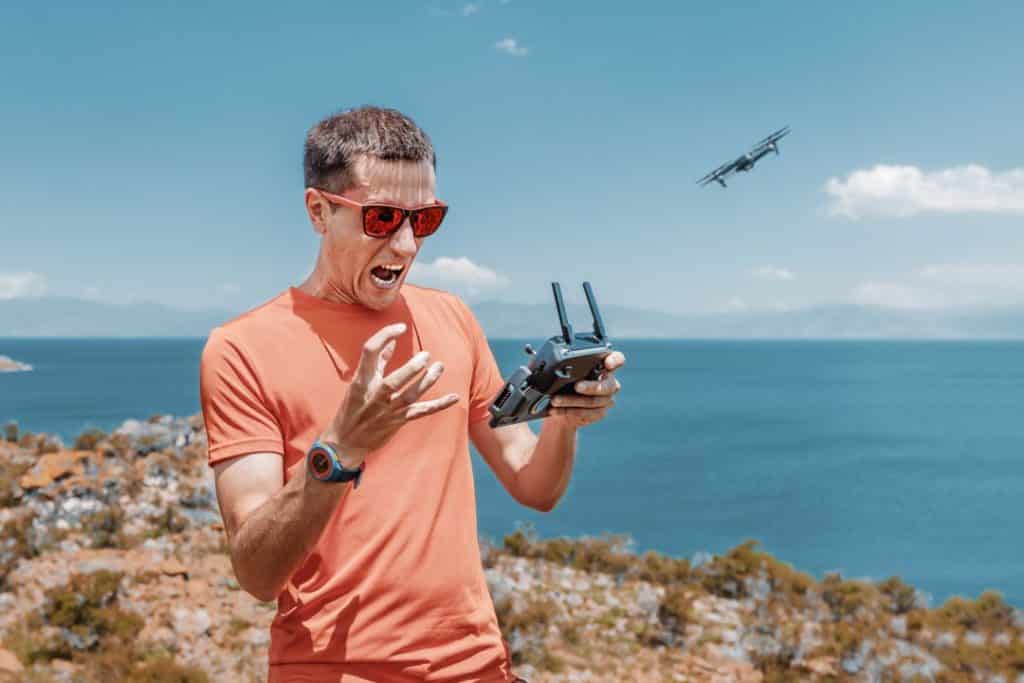
Recently we overlooked our top causes of claims for 2021. Coming in at number one at 33% was Pilot Error, a common occurrence amongst many pilots caused by failure to perform to a satisfactory standard.
We spoke with Training Centre and Retailer Heliguy to delve into some of the reasons why pilot error happens and how to reduce your chances of crashing your drone and conduct the safest flight possible!
Fling out of line of sight
If you are flying your drone, you must fly within your visual line of sight. While it is necessary to have special permissions from the CAA to fly BVLOS – Many unfortunately take the risk themselves without the correct permissions and the appropriate training. Without the precautions and knowledge required to fly BVLOS, some operators have crashed as a result of this.
Flying in areas of high electromagnetic interference
If you are not familiar with objects that cause high electromagnetic interference, they tend to be made of steel and electricity. They are objects such as: power lines, metal roofs and steel structures for example. A construction site would be a location that would more than likely have several of these objects and hazardous to a drone pilot due to high electromagnetic interference caused by them.
Jack Bishop, Technical Support Lead at Heliguy, said: “Drone’s rely on a few key sensors to ensure they remain in stable flight, one of these key sensors is the drone’s compass; this calculates which direction the drone is pointing.
“Areas of high EMF such as areas around electricity pylons or mobile phone masts can interfere with the readings on this compass.
“This will usually result in a loss of control of the aircraft as it is no longer calculating an accurate heading.”
Testing a new drone indoors instead of a wide-open area
We understand that you are trying to get familiar with your new drone, but to be as safe as possible when trying out your new piece of tech and all it can do, we would always recommend flying in a spacious environment.
Jack said: “Many first-time drone operators will be apprehensive to test their new drone out in the open, and instead opt to fly indoors.
“Drones are best suited to fly in large open environments where they have a strong GPS signal to hold their position, when testing indoors you no longer have the level of position hold as you would outside.
“Adding to that you are also much more likely to encounter obstacles when testing your drone indoors. It’s always best to practise out in the open with a good GPS signal and a large margin for error.”
Operators seeing how far away they can fly their drone out to sea
Operators seeing how far away they can fly their drone out to sea is a result mainly of curiosity from the drone operator.
Jack said: “The UK we are limited to a distance of 500m and an altitude of 400ft. However, we have mainly found people see it fit to test the limits of what their drone is capable of by flying it out to sea.
“Besides the fact they are breaking UK laws going beyond 500m, many will find their drone unable to return due to lack of battery level and changes in the wind direction.
“This has left many to watch their drone descend slowly into the sea as their drone cannot quite make the return trip.”
Drone operators need to be extremely mindful when flying over water and understand the potential hazards and risks taken. Check out Coverdrone’s 5 top tips for flying your drone over water for drone pilots today to help you fly with confidence when operating your drone in a water environment!
Trusting the aircraft's obstacle avoidance systems
This is a factor that is becoming a more common result of human error, drone pilots are relying on aircraft’s obstacle avoidance systems a little too much at times…
One example of a drone with an aircraft obstacle avoidance system would be the DJI Mavic 3 which has omnidirectional obstacle sensing.
Jack said: “Although these systems work great for solid objects like buildings and large natural structures, but they aren’t faultless and sometimes fail to see some obstacles.”
There is no doubt that these systems are fantastic and the features they entail. However, sometimes, objects that are small such as the branches of a tree can be difficult for the drone to pick up on.
Get insured with Coverdrone today!
Whether you be a recreational or commercial drone operator, we have flexible drone insurance policies to suit you! Check out what our drone insurance policies entail today and view our frequently asked questions to find out more. You can also get a free quote by filling out our online drone quote form!
